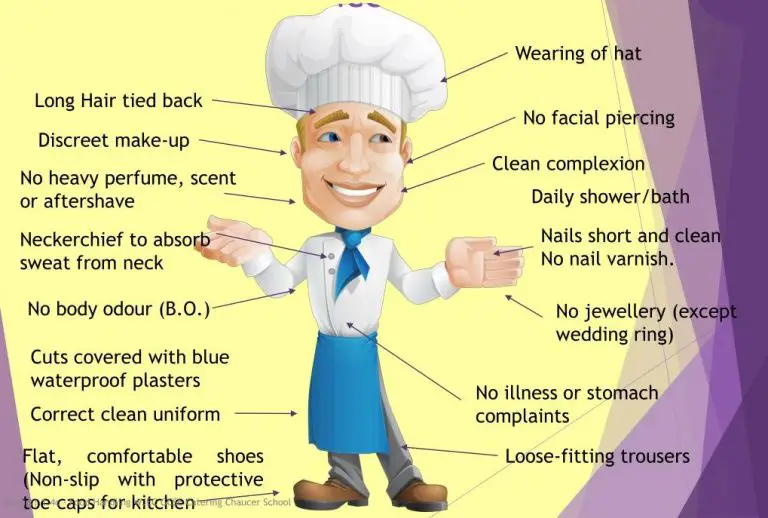
Personal hygiene in Kitchen
Most of the food-borne disease is caused by bacteria, spread by food workers or handlers. Hence the first step in preventing food-borne disease is good personal –hygiene.
Do’s for Personal Hygiene in Kitchen

• Bath or shower daily.
• Wear clean uniforms and aprons.
• Keep hair neat and clean. Always wear a hat or hairnet.
• Keep mustaches and beards trimmed and clean. Better yet, be cleanly shaven.
• Wash hands and exposed parts of arms before work and as often as necessary during work, including:
• After eating, drinking, or smoking.
• After using the toilet.
• After touching or handling anything that may be contaminated with bacteria.
• Cover cough and sneezes, and then wash hands.
• Keep your hands away from your face, eyes, hair, and arms.
• Cover cuts or sores with clean bandages.
• Use spoons for a tasting, not your finger.
Don’ts for Personal Hygiene
• Do not work with food if you have any communicable disease or infection.
• Keep fingernails clean and short. Do not wear nail polish.
• Do not smoke or chew gum or tobacco while on duty.
• Do not sit on worktables.
• Avoid wearing jewelry in the kitchen.
• Do not use kitchen sinks for personal washing or for spitting.
Procedure for Washing Hands
• Wet your hands with hot running water. Use water as hot as you can comfortably stand, but at least 100°F (38°C).
• Apply enough soap to make a good lather.
• Rub hands together thoroughly for 20 seconds or longer, washing not only the hands but the wrists and the lower part of the forearms.
• Using a nail brush, clean beneath the fingernails and between the fingers.
• Rinse hands well under hot running water. If possible, use a clean paper towel to turn off the water to avoid contaminating the hands by contact with soiled faucets.
• Dry hands with clean single-use paper towels or a warm-air hand dryer
Guidelines for Using Disposable Gloves
• Wash hands before putting on gloves or when changing to another pair. Gloves are not a substitute for proper hand-washing.
• Remove and discard gloves, wash hands, and change to a clean pair of gloves after handling one food item and before starting work on another.
• In particular, never to fail to change gloves after handling raw meat, poultry, or seafood. Gloves are for single use only.
• Remember that the purpose of using gloves is to avoid cross-contamination.
• Change to a clean pair of gloves whenever gloves become torn, soiled, or contaminated by contact with an unsanitary surface.
You can also Check :
Production Quality & Quantity Control: Kitchen Production Management
Update Guidelines of new Food Safety can be seen here.